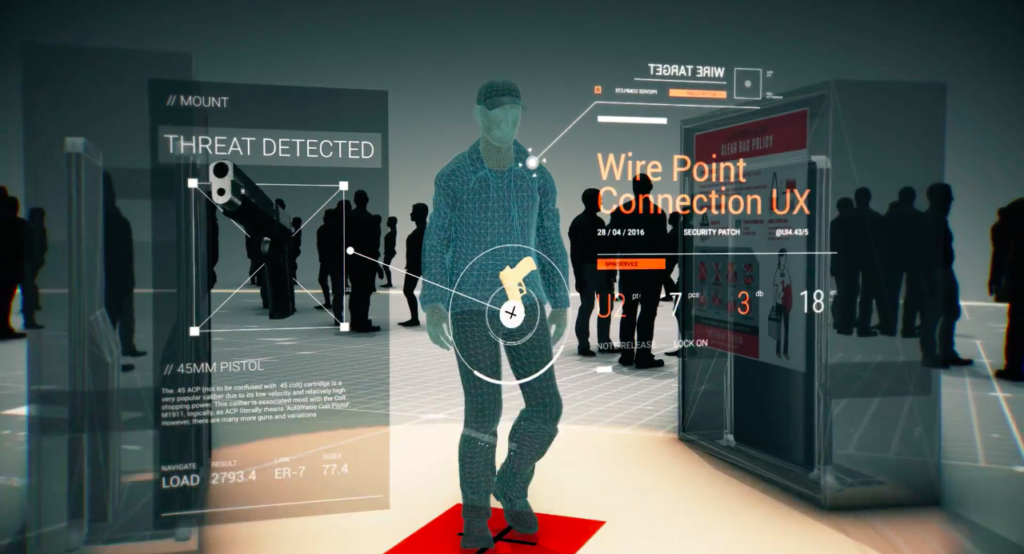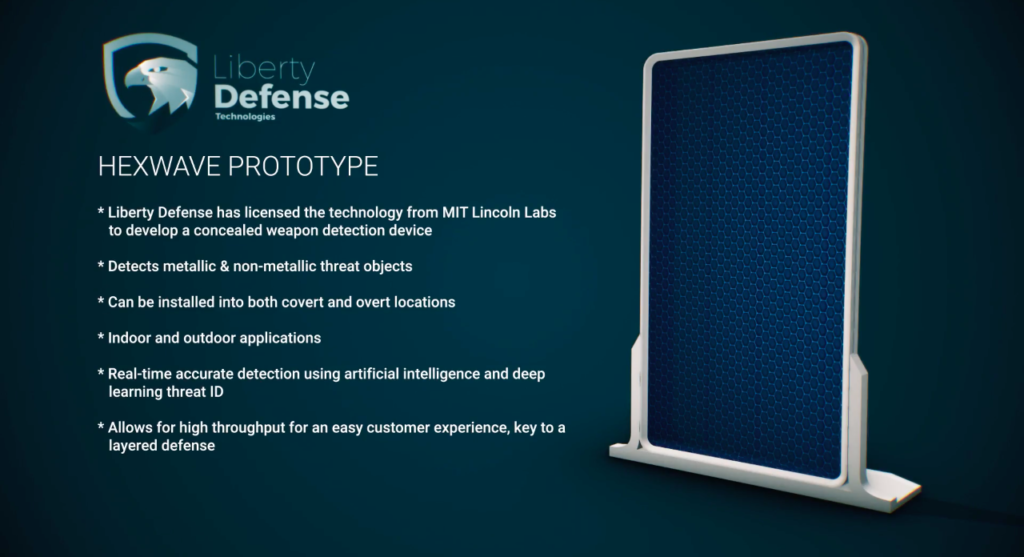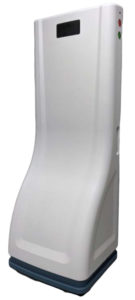3D printed guns remain a controversy, despite the comparatively little threat they pose compared to mass-produced weaponry (that isn’t to say that there are no dangers to the technology). As a result, there is no shortage of businesses, politicians and talking heads looking to take advantage of the heated topic.
The latest firm to use 3D printed firearms as a marketing technique is Liberty Defense, which has developed a product called HEXWAVE: a low-power radar for scanning and generating real-time 3D images of a person’s belongings as a means of detecting metal and nonmetal weapons. Liberty Defense boasts HEXWAVE’s ability to detect non-metal guns as a means of bypassing the threat of 3D printed, plastic firearms.
HEXWAVE is based on microwave scanning technology licensed from MIT Lincoln Labs. The system features an antenna array that transmits microwaves 200-times less powerful than WiFi signals through a person’s clothing and bags, which then bounce off and return to the system’s radio-frequency transceivers. Real-time image processing software then generates a 3D image made from about 400,000 data points.
Rather than have a human inspector analyze each image picked up by the system, HEXWAVE relies on machine learning and artificial intelligence to determine whether a given object meets threat criteria. If it does, the system sends an alert to a venue’s security team. If not, no notification is sent, meaning that no human ever sees scanned objects that are non-threatening. Or that someone designed a 3D printed gun to look like an innocuous object.
The company claims that “no personal identifiable information is collected or viewed by security teams or other operations personnel, which helps protects the privacy and modesty of individuals.” Given the widespread abuse of data collection by governments and private companies alike, one should be hesitant to believe that privacy in this case or any case is 100 percent guaranteed, however.
Other features include HEXWAVE’s ability to interface with existing security infrastructure, as well as the ability to deploy the system covertly or discretely as a standalone unit or with multiple units. Because the technology captures data in real-time, people can walk through HEXWAVE detectors at a normal pace, allowing scans of over 1,000 people per hour.
Aside from these features, it is key to once again highlight that the technology can scan for metal and non-metal items, including 3D printed plastic guns. While we’ve come across numerous stories about people 3D printing plastic guns, there has not yet been an incident of violence conducted with a 3D printed gun. From what we understand, based on tests performed by Scotland Yard, these guns may actually be more dangerous to the user than any intended victim due to the possibility of the plastic rupturing upon firing.
That isn’t to say that 3D printed guns are entirely innocuous. As the price of industrial 3D printers drops, making engineering-, aerospace-grade plastic (like PEEK, PEKK and PEAK) more accessible, plastic guns could become more durable. As a result, countries with stricter gun laws (say Japan, Australia, the U.K., Canada, or China) may have to contend with plastic weapons. In turn, technology like HEXWAVE could become useful for public protection.
In the U.S., however, where there have been more mass shootings than days in the year in 2019, 3D printed guns rank lower in terms of threat to public safety than legal, mass-manufactured automatic weapons like the AR-15 or even semi-automatic pistols.
If the goal of something like HEXWAVE is to stop 3D printed firearms, then the U.S. may not be the number one market; however, it obviously has other uses beyond 3D printed guns, like acts of terrorism. If the goal is to eliminate threats of mass shootings and terrorist attacks, changes would need to be made at the federal level regarding gun laws or even U.S. foreign policy.
So far, Liberty Defense is beta testing HEXWAVE with a number of partners, including Camden Yards Sports Complex in Baltimore, Maryland; FC Bayern Munich’s Allianz Arena in Germany; Rogers Arena in Vancouver, British Columbia; in the state of Utah; in Sleiman shopping centers; among other areas.
Though Liberty Defense does not yet have a commercially available product, it is publicly traded. Typically, this would be a red flag for investors, but because HEXWAVE is in beta testing using technology acquired from MIT, we may begin to see (or walk by) HEXWAVE in public settings starting in 2020.
Join the discussion of this and other 3D printing topics at 3DPrintBoard.com.
Subscribe to Our Email Newsletter
Stay up-to-date on all the latest news from the 3D printing industry and receive information and offers from third party vendors.
You May Also Like
Profiling a Construction 3D Printing Pioneer: US Army Corps of Engineers’ Megan Kreiger
The world of construction 3D printing is still so new that the true experts can probably be counted on two hands. Among them is Megan Kreiger, Portfolio Manager of Additive...
US Army Corps of Engineers Taps Lincoln Electric & Eaton for Largest 3D Printed US Civil Works Part
The Soo Locks sit on the US-Canadian border, enabling maritime travel between Lake Superior and Lake Huron, from which ships can reach the rest of the Great Lakes. Crafts carrying...
Construction 3D Printing CEO Reflects on Being Female in Construction
Natalie Wadley, CEO of ChangeMaker3D, could hear the words of her daughter sitting next to her resounding in her head. “Mum, MUM, you’ve won!” Wadley had just won the prestigious...
1Print to Commercialize 3D Printed Coastal Resilience Solutions
1Print, a company that specializes in deploying additive construction (AC) for infrastructure projects, has entered an agreement with the University of Miami (UM) to accelerate commercialization of the SEAHIVE shoreline...

































